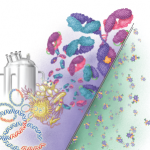Just YouTube it.
As a rheumatologist who sees many patients with granulomatosis with polyangiitis (GPA), I have spent a significant portion of my life talking to people about neti pots.
Originally, the neti pot was part of the Ayurvedic tradition. Neti pots were used to flush the sinuses with water, milk and ghee, or to prepare the body for meditation.1
The neti pot would have remained an Ayurvedic footnote if it were not for a brilliant cardiac surgeon from Columbia University, Mehmet Oz, MD, MBA, who appeared on a television show hosted by a former Baltimore reporter. In 2006, Dr. Oz went on The Oprah Winfrey Show to extol the health benefits of using a neti pot on a regular basis.2 The rest, as they say, was history. Endorsement by both Dr. Oz and Oprah was enough to get neti pots on the shelves of every CVS and Walgreens across the country.
For patients with GPA, medications may not be enough to keep their sinus disease under control. For many of them, an epoxy of blood and mucous adheres to their sinuses and becomes a nidus for infection. Irrigation with a neti pot, two or three times daily, is often the only intervention that brings their symptoms under control.
Most patients try to give me the benefit of the doubt, but it’s a tough sell. Further, I know if their first time using a neti pot is a disaster, they won’t hesitate to abandon it. So I provide them with some additional instruction:
Buy a gallon of distilled water from the pharmacy. Wash out the neti pot, and fill it with water. Bring it into the bathroom with you. After a hot shower, which loosens the mucus, hold the neti pot in your dominant hand. Now breathe: nice, slow, deep breaths.
Do you remember jumping into a pool as a kid, and trying to keep the water from running up your nose? That’s the sensation you have to fight; you have to let the water up and in. After you have a nice breathing rhythm, bring the neti pot to one nostril, lean forward, and let the water flow. If the water seems to stop at your nose, put the pot down, and try again tomorrow. When you have mastered the technique, you’re ready to start adding the salt packets.
I don’t give this tutorial as often anymore. Nowadays, more often than not, I send my patients to YouTube.
The internet has a surfeit of instructional videos on how to use a neti pot appropriately. I tell my patients to watch a few of them before they decide to try it. In part, I want them to have a solid understanding of the technique before jumping in. But I also know the videos simultaneously encourage them to dip a toe in the water. Every video starts with a convert, pot in hand, praising the Way of the Neti. Nothing is quite as convincing as a patient with chronic sinusitis or allergies talking about how sinus irrigation has changed his life. Two or three testimonials are all it takes for most patients to be willing to take the plunge.
I know that asking my patients to self-educate is not ideal, but for this particular intervention, it seems to work well enough. It also gives me back 10 minutes in an appointment, which I can use to talk about other issues that are more firmly in my wheelhouse. But what about more complicated tasks, like injecting a biologic for the first time? What resources can patients use when YouTube videos are not enough?
Enter the nurse ambassador.
Mind the Gap
Sometimes referred to as a patient educator, the nurse ambassador role was created by pharmaceutical companies that specialize in drugs that treat chronic illness. Patients who have diabetes, multiple sclerosis or rheumatic disease often have complex medical regimens that create a unique set of challenges. The best medications may do no good if the patient is taking them incorrectly or can’t get approval to take the medication in the first place.
A nurse ambassador may provide a number of services, such as teaching a patient how to self-inject medications, helping with insurance and pharmacy paperwork and promoting medication adherence.3 In other words, they fill in the gaps.
I know that, in an ideal world, I would help a patient complete paperwork, drive to their house to show them how to use the injector associated with their drug and then check up on them every two weeks to make sure they have developed a routine. I just don’t have that sort of time.
For a nurse who enjoys patient education and problem solving, this can be a gratifying job. Katheryn Bowles, an associate professor at the University of Pennsylvania’s School of Nursing, notes, “It’s a very important service that’s much needed. Patients with multiple chronic conditions see a variety of doctors and end up on 12–14 medications with complex rules and schedules. Errors and dangerous interactions happen.”4 A nurse ambassador may play an important role in ensuring that a complex management plan is seen through to completion.
So what’s the problem?
Ambassador Ethics
Nurse ambassadors are asked to walk a fine ethical line between the patient who is receiving the services and the company that is paying for the services to be rendered. Crossing that ethical line is sometimes called white coat marketing. Adriane Fugh-Berman, a professor at Georgetown University Medical Center, Washington, D.C., describes the practice as “marketing laundered through your doctor.”5
The nurse ambassador runs the risk of blurring the lines between practitioner and marketer, because helping patients start and remain on drugs supported by nurse ambassador programs will ultimately enhance a company’s profits.
Some see nurse ambassador programs as an illegal kickback to the prescribing physician. When I was in training, it wasn’t uncommon for a pharmaceutical representative to take a large group of interns out to dinner at a restaurant none of us could afford. In 2009, the pharmaceutical industry adopted a voluntary code of conduct, which curbed pharma freebies. The nurse ambassador program gets through on a technicality. By providing valuable services (e.g., assistance with insurance paperwork or monitoring patient adherence) for free, nurse ambassadors may have inadvertently become the drug dinner of the 21st century.
This is a particularly insidious conundrum because physicians are notoriously cheap. In one study, physicians attending a single lunch promoting a brand-name drug were twice as likely to prescribe that drug over a generic alternative. The average cost of that lunch? Less than $20.6 Although I can’t cite any studies, it’s not hard to imagine that a nurse ambassador, who could potentially take many patient problems off my plate, would buy at least as much goodwill as a burger and fries.
Shahram Ahari, a former pharmaceutical sales representative who is now an emergency medicine physician, notes, “[F]ood and payments aren’t the only ways pharma reps get products in front of medical providers. In my experience, sometimes the ‘gifts’ were less literal: They included simple friendship. … Little favors have a subtle way of making the recipient feel obligated to reciprocate in some way.”7
Not surprisingly, these concerns have led to lawsuits. In 2018, Gilead Sciences, Amgen, Eli Lilly, Bayer Pharmaceuticals and AbbVie were all accused of violating federal kickback laws by their use of nurse ambassadors.8 In 2020, AbbVie agreed to pay $24 million to settle a lawsuit that alleged its nurse ambassador program violated California’s Insurance Frauds Prevention Act by providing free professional goods and services to physicians to induce them to prescribe their tumor necrosis factor (TNF) inhibitor. As part of the settlement, AbbVie agreed to make clear to patients that the nurse ambassador program is paid for by the company and not by the prescribing physician.
That last bit makes a good point: When someone gives you advice, you should know who is paying the bills. Even the most scrupulous nurse ambassadors would probably be reluctant to bite the hand that feeds them, and even if this bias is slight or subconscious, the patient deserves to know the bias may exist.
Choiceless Choices
The bulk of the complaint, however, makes me wonder whether California’s attorney general (AG) has any idea what it is like to be a practicing rheumatologist. The AG seems to be laboring under the misunderstanding that, when a patient needs a TNF inhibitor, I am free to choose whichever drug I want. As you know, that is far from the case.

‘A nurse ambassador, who could potentially take many patient problems off my plate, might buy at least as much goodwill as a burger and fries.’
When I am planning to prescribe a TNF inhibitor, I make certain my note documents the treatment history, so it is clear to the insurer the patient has had an adequate trial of cheaper medications. Some of my colleagues go as far as to treat an especially active rheumatoid arthritis patient with both methotrexate and hydroxychloroquine, so the patient can simultaneously fail two medications, which is required by some insurers to green-light a biologic. My note will also document the patient meets the 2010 ACR/EULAR classification criteria for rheumatoid arthritis, even though ACR criteria were never intended to be used to determine which patients were worthy of treatment with a biologic.
That’s just the beginning. Whenever I write a prescription for a biologic, I warn the patient that it may be months before they receive the drug. Sometimes, the insurer wants more documentation that I know what I’m doing. Sometimes, the insurer wants me to first try another biologic, or another brand. Those decisions are largely made by the pharmacy benefit managers, which steer me to the drug that allows them to generate the greatest profit.
In theory, programs like nurse ambassadors may discourage clinicians from prescribing biosimilars. As a clinician, I know the decision to prescribe biosimilars has been taken out of my hands. Biosimilars were supposed to lead to $54 billion in cost savings in the U.S. In practice, widespread biosimilar use has been hindered by litigation that blocks their sale and by the pharmacy benefit managers who use the threat of biosimilars to drive down the price they pay for brand name drugs.9
Rituximab is a good example of this. Many of my patients now receive treatment with biosimilar rituximab, rather than the brand name agent. I just can’t predict which agent any given patient may receive. Counterintuitively, I find the pharmacy benefit managers will often insist I prescribe the brand name originator biologic, which is just further proof of how arbitrary drug prices really are.
The more important question we should be asking is why nurse ambassador programs are both popular and necessary. The answer, of course, is that they serve to address fundamental flaws in the American healthcare system.
Just like many healthcare providers, nurse ambassadors are faced with ethical issues that are very specific to the role they play. At some point, it may be worthwhile to come up with a code of ethics for nurse ambassadors to provide them with external guidance on how to act in tricky situations and, more importantly, to provide them with cover when their obligations to the patient conflict with their obligations to their employer.
That said, the existence of nurse ambassadors are just a symptom of an illness. I can understand why they have been targeted by regulatory agencies, but I hope no one believes that getting rid of nurse ambassadors will cure the disease. The more important question we should be asking is why nurse ambassador programs are both popular and necessary. The answer, of course, is that they serve to address fundamental flaws in the American healthcare system.
Nurse ambassadors may help complete paperwork that is necessitated by pharmacy benefit managers to maximize profits, under the guise of shepherding the use of expensive drugs. Additionally, nurse ambassadors provide the individualized follow-up that I’m sure many of us would be happy to provide personally, if only we could convince our employers that such time was well spent.
Biologic agents are a $125 billion business in the U.S.10 The financial stakes associated with their judicious use are enormous. But the personal stakes for our patients are enormous as well.
Instead of attacking the consequences of our healthcare system, we need to think more fundamentally about how we can redesign American healthcare to serve patients and not profits. Because as all of us know, addressing symptoms doesn’t make the patient better. You have to treat the disease.
 Philip Seo, MD, MHS, is an associate professor of medicine at the Johns Hopkins University School of Medicine, Baltimore. He is director of both the Johns Hopkins Vasculitis Center and the Johns Hopkins Rheumatology Fellowship Program.
Philip Seo, MD, MHS, is an associate professor of medicine at the Johns Hopkins University School of Medicine, Baltimore. He is director of both the Johns Hopkins Vasculitis Center and the Johns Hopkins Rheumatology Fellowship Program.
References
- Sexton S. The history & science of the nasal wash. Yoga International.
- Oz M. Your questions answered! What is a neti pot? Can it help with allergies and sinus problems? Oprah.com. 2006 Jan 1.
- Grundy Q, Ladd E. ‘Nurse ambassadors’: A new ‘fulcrum’ of pharmaceutical marketing. Health Affairs. 2019 Jan 4.
- Rossheim J. Big pharma recruits nurses to fill patient-educator roles. Monster.
- Why ‘white coat marketing’ is under legal fire. Advisory Board. 2019 Jan 8.
- DeJong C, Aguilar T, Tseng C-W, et al. Pharmaceutical industry–sponsored meals and physician prescribing patterns for Medicare beneficiaries. JAMA Intern Med. 2016;176(8):1114–1122.
- Ahari S. I was a drug rep. I know how pharma companies pushed opioids. The Washington Post. 2019 Nov 26.
- AbbVie is accused of paying kickbacks, using a stealthy network of nurses to promote Humira. AMS Intelligent Analytics. 2018 Sep 19.
- Chen BK, Yang YT, Bennett CL. Why biologics and biosimilars remain so expensive: despite two wins for biosimilars, the Supreme Court’s recent rulings do not solve fundamental barriers to competition. Drugs. 2018 Nov;78(17):1777-1781.
- Brill A, Ippolito B. The economics of biologic drugs: A further response to Bach et al. Health Affairs. 2019 Aug 8.



